Expert Guide: Differences Between Kief vs Hash
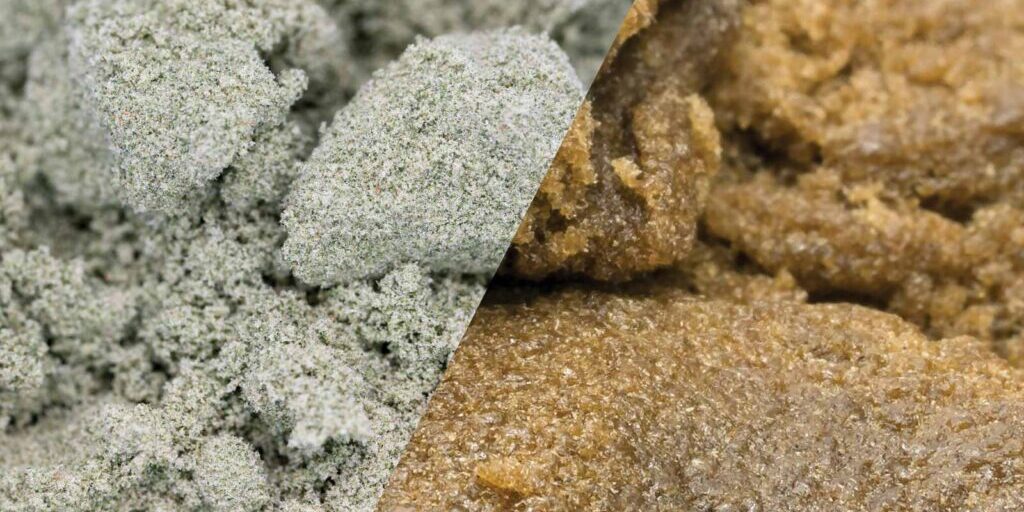
Cultivators have become increasingly interested in developing new, potent ways to optimize the benefits of cannabis. As cannabis extracts grow in popularity, products within the category such as shatter, budder, rosin, hash, and kief are gaining a loyal following within the industry.
Two of those in particular are commonly mistaken as a similar cannabis product. “Hash” is the abbreviation for hashish, a cannabis plant-derived, refined substance. Conversely, “kief” describes the glands that contain a high concentration of cannabinoids found in the plant’s bud that are isolated for consumption.
Although hash and kief are occasionally used synonymously, they are not the same. Though they come from the same area of the cannabis plant, they relate to two different kinds of cannabis extract. Here we’ll discuss the characteristics of hash vs. kief and the differences between them.
Kief vs Hash: How Are They Different
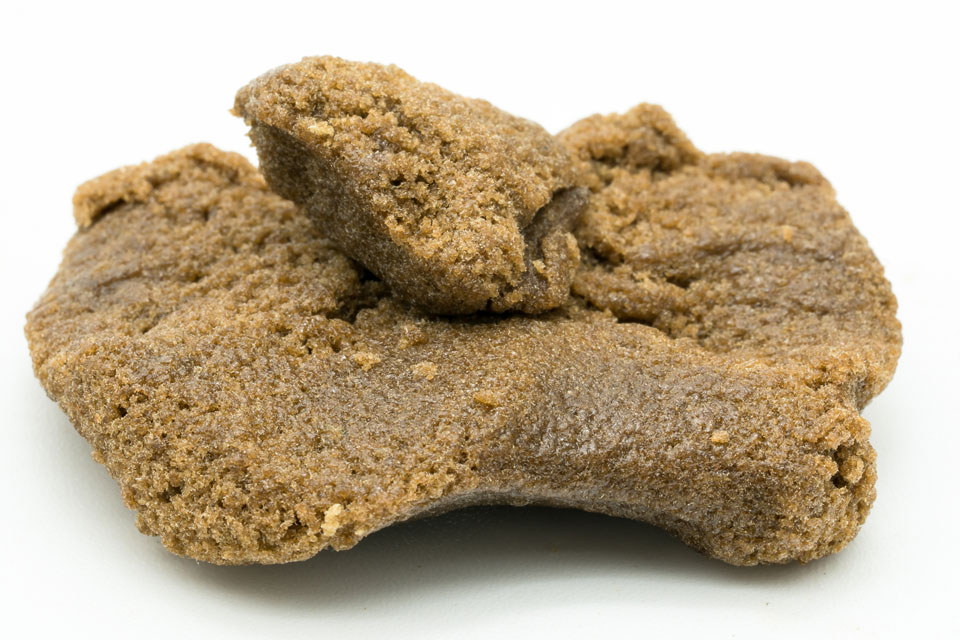
Kief and hash are both derived from the resin glands of cannabis flower, also known as trichomes. Trichomes are small hairlike structures that contain most of the plant’s cannabinoids, terpenes, and flavonoids, all of which give the flower its distinct aromas and effects. Because of the high concentration of cannabinoids in trichomes, they are used to create potent end products like concentrates and cannabis oils.
Both kief and hash are popular among cannabis users for their effects and various consumption methods, but there are some key differences between the two that are important for individual and commercial cannabis producers to understand.
With regards to production, both kief and hash begin at the same place: trimming the flower from a cannabis harvest to separate the buds that eventually go out for sale and the smaller buds, trim, and excess plant material that is left behind for further processing or waste.
Harvesting and processing pounds of cannabis flower per hour is made easy with batch-style dry trimmers that remove the fan and sugar leaves and extra plant material from the buds.
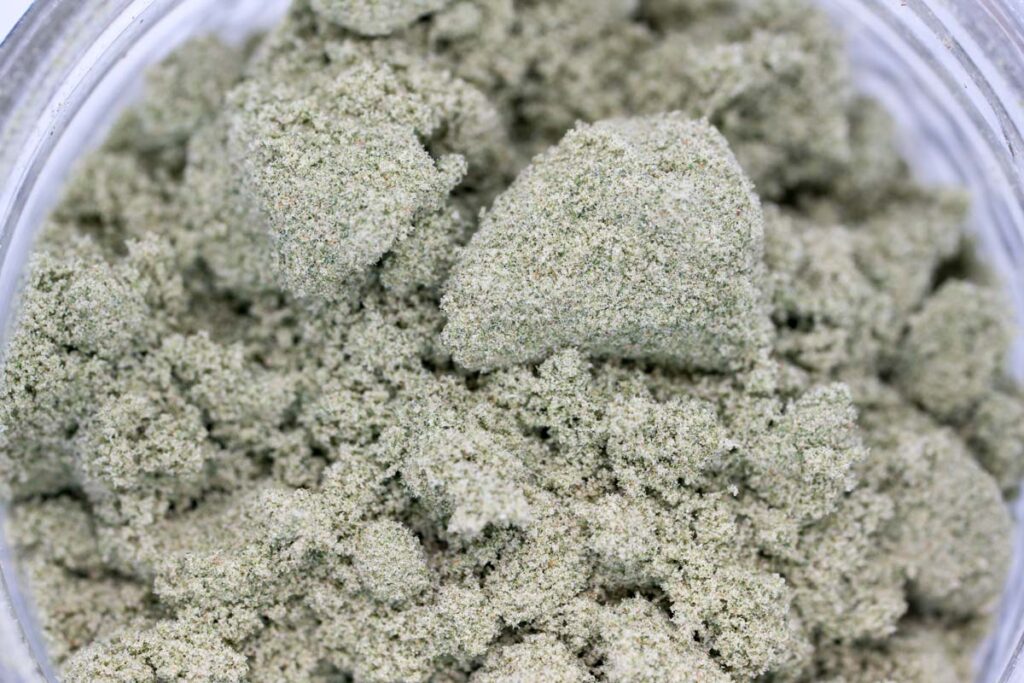
Kief
Kief is a collection of trichomes that are found on the leaves and flowers of the cannabis plant. Kief is made by separating those trichomes from the rest of the plant material and collecting them in a separate container.
Kief is often referred to as “pollen” or “dry sift,” and it is considered to be a highly potent form of cannabis due to its high concentration of cannabinoids. However, the exact potency of kief can vary depending on the specific strain of cannabis it is collected from and the method used to extract it.
Kief can be collected by sifting dried plant material through a screen, grinder, or fine mesh. The trichomes will fall through the screen and can be collected and used in various ways. After collecting kief, it can be smoked or vaporized on its own or mixed with flower to increase its potency. It can also be used to make various concentrates, hash, and edibles, or added to other cannabis products, such as topicals or tinctures.
Individuals and Smaller Producers
Many cannabis consumers will use a multi-chamber grinder to break up the whole cannabis bud. Larger pieces used for packing bowls and rolling joints stay in the main chamber, while a second chamber at the bottom of the grinder, known as a kief catcher, will collect all of the kief from the grinding process.
Smaller producers and extractors gather kief by agitating the cannabis flower over a silkscreen or mesh. There are several sizes available for these screens, but the ideal size for kief is between 75 and 125 microns. To refine the product and remove any plant matter or other substances from it, extractors can stack multiple screens of varying sizes from largest mesh to smallest for the best results.
Larger and Commercial-Scale Producers
When producing kief on a larger scale or with a commercial harvest, cultivators need more efficient, cost-effective ways to extract kief. Some producers may use a commercial-scale version of the mesh screen method to achieve a batch of collected kief, while others will opt for a more streamlined process.
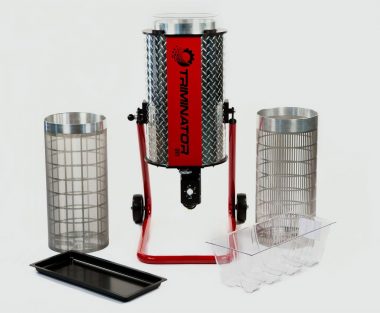
When processing a large cannabis harvest, one of the best ways to collect kief is with commercial-scale processing equipment. Equipment like the Triminator Dry and XL Dry trimmers are capable of trimming harvests with efficiency and precision. After the flower is trimmed, it can be sent for packaging for retail sale or further processing while the trim stays behind for the next step. This resulting leftover trim is captured in the trim bin and can be loaded into a separate tumbler to extract the kief.
The commercial-grade Kief Kit works by tumbling trim, and the motion allows for the resin glands to be separated from the cannabis plant material and fall through the micron screen. The potent kief is collected at the bottom of the machine in the special catchment tray.
Both trimmer models have a Kief Kit upgrade that comes with a 150-micron mesh drum, a special catchment tray, and a brush for collecting. This kief collection system is simple to use and easily swapped in for no downtime during production. In extracting kief from your trim, you get the most yield and profit from your harvest.
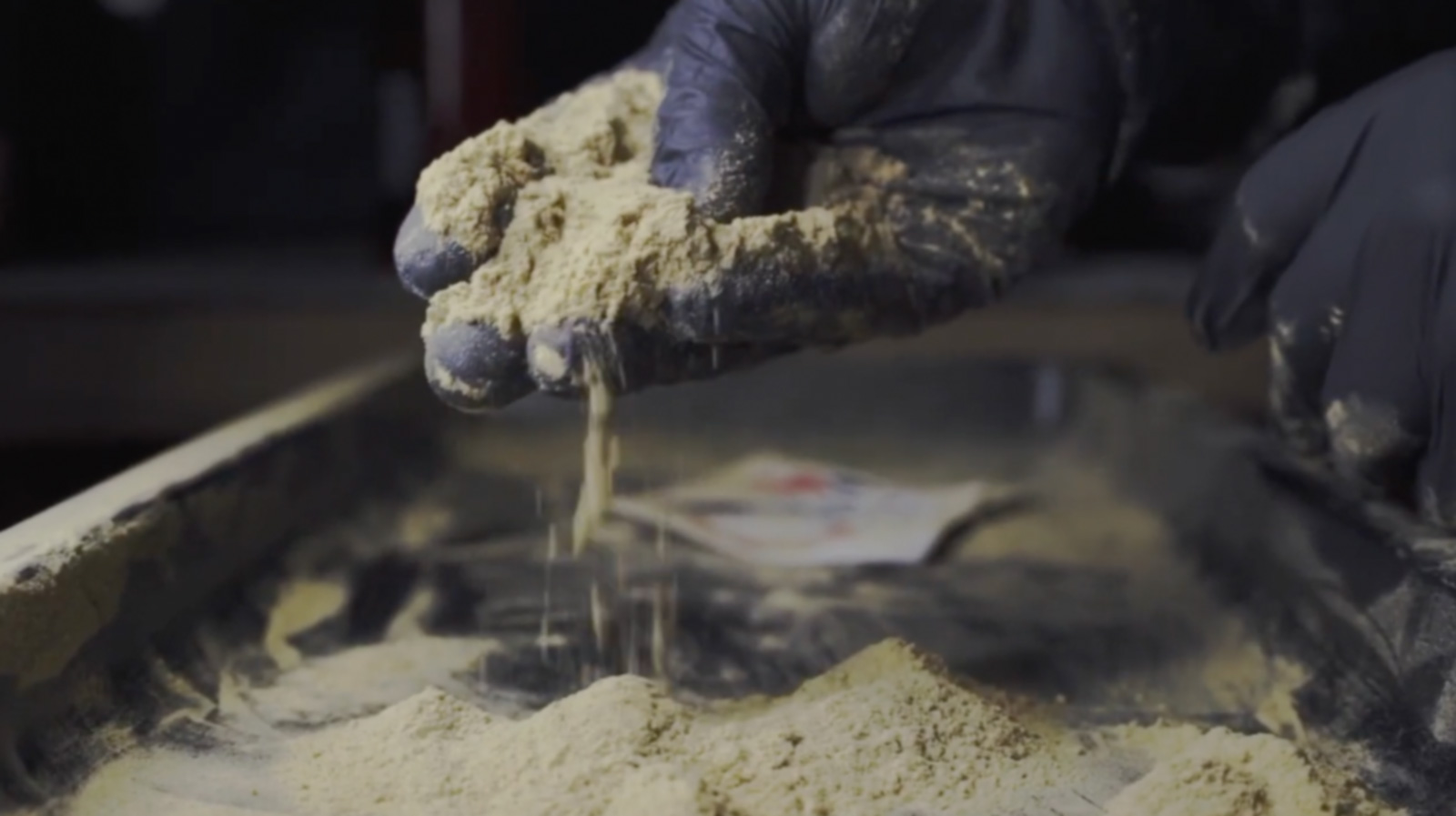
Connect with an expert today.
Hash
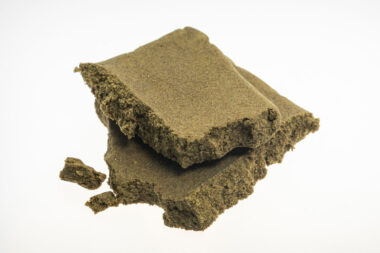
Hash has its history and roots in being used as a cannabis concentrate for centuries and has been made in a few different ways throughout the years. Hash is a concentrated form of cannabis made by separating the trichomes from dried plant material and pressing them into a mass.
Hash is typically darker and more compact than kief and has a slightly different flavor and aroma. Hash can be smoked on its own or added to other products for a more potent experience.
There are several ways of making hash depending on the scale of the production. After the flower is dried, cured, and trimmed, hash can be made from methods involving sifting, mechanical or chemical extraction, solventless extraction, and ice or ice water extraction for bubble hash.
How Hash Is Made
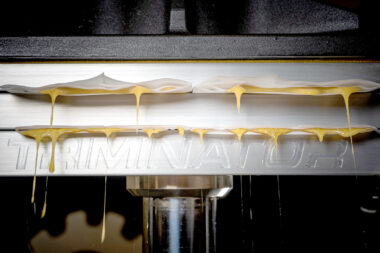
With various ways to make hash, each method requires its own equipment. Sieves or screens separate trichomes from the plant material for dry sift hash. Kief can also be used to make hash once it is separated from the buds.
Pressing equipment like the TRP Stack Rosin Press can be used to apply heat and pressure to the material. The product extracted from this process can be sold for a high profit, making it a lucrative business opportunity.
There is also the process of making ice water hash, which involves ice, water, and filter bags. Also known as bubble hash, this process typically uses fresh frozen flower and preserves terpenes and cannabinoids in the final product for a more flavorful and powerful effect. Ice water, or bubble hash, is rated on a 6-star quality system and has many uses.
The quality of the flower at the start of the process is imperative for the purity and potency of the final product. Offering a more intense effect, hash can be used in various ways. It can be sprinkled on top of a packed bowl, used in a joint, dab rig, or vaporized.
Kief vs Hash: Potency Comparison
Both kief and hash can offer excellent levels of potency. Kief is rich with cannabinoids. However, the potency of kief can be enhanced by the hash creation process. Hash is essentially the stronger, and more refined sibling of kief.
Anyone can extract kief using a grinder with a kief chamber or on a commercial scale using a micron mesh screen or a kiefing drum like the Triminator Kief Kit. However, hash requires a more involved production process, which includes heating and pressurizing the kief product. During hash production, higher numbers of trichomes are compressed together, increasing potential potency.
Typically, while kief has potency levels ranging from 50-80%, depending on the cannabis cultivar and the health of the plant, hash can have potency levels reaching up to 90%.
The higher potency is a result of the concentrated form of cannabis that’s created by compressing the kief-containing resinous trichome glands of the plant. Because kief contains higher levels of terpenes and cannabinoids, when compacted into hash, the end product is refined and concentrated with more of those valuable compounds.
The result is that hash usually delivers a more intense and instant effect. It can also be used in a variety of different ways, in tinctures, joints, packed bowls, and more.
The overall potency of both cannabis and kief depends heavily on the quality of the plant and the characteristics of the cultivar used. Each plant has its own cannabinoid and terpene profiles to consider, which can contribute to the results of both kief and the hash products you create.
These profiles also have an impact on the flavor, aroma, and overall qualities of your kief and hash products, making selection of the right plants essential.
Kief vs Hash: Final Thoughts
Overall, kief and hash are both popular forms of cannabis concentrate that offer potent effects and a variety of consumption methods. The key differences between kief and hash are the potency of the final product and the ease of production.
Kief is typically less potent than hash, as the trichomes are not subjected to the same level of heat and pressure during the production process. Kief is also relatively easy to produce, as it simply requires separating the trichomes from the rest of the plant material. This can make kief a good choice for individual growers or those new to cannabis or who want a more subtle effect.
Hash, on the other hand, is more potent and requires more specialized equipment and a more complex production process, making it a better choice for commercial growers or those looking for a more potent experience. This can make it more challenging for individual growers to produce, although there are some small-scale hash-making kits available on the market.
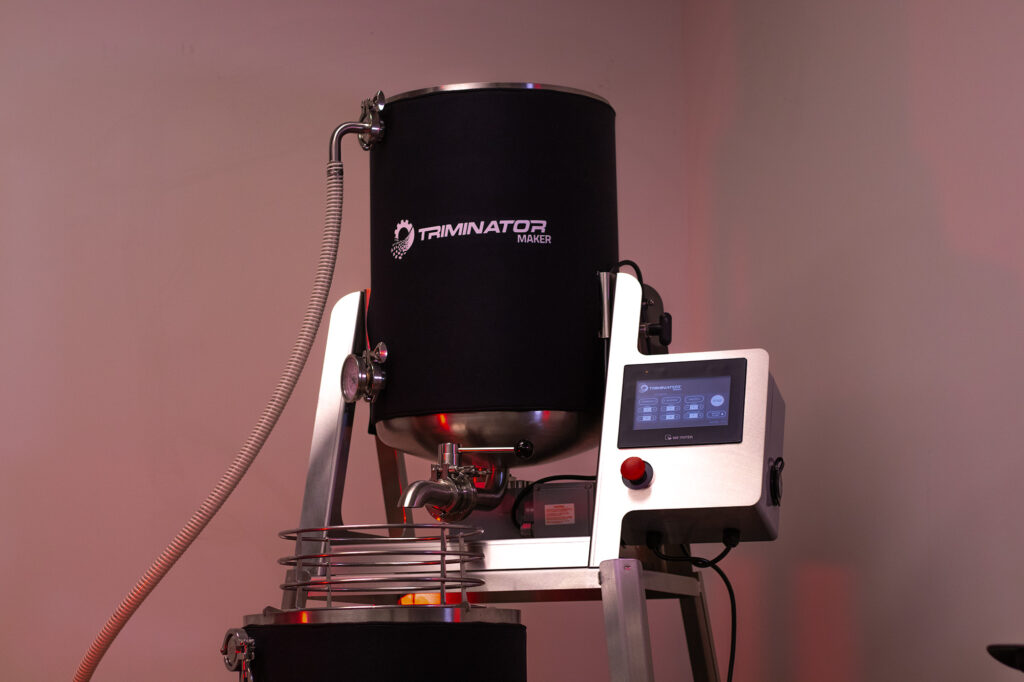
Triminator has equipment and products designed for kief and hash for small to large growers. From trimmers with kief kits and accessories to rosin presses and hash washers, Triminator specializes in providing industry-leading cannabis processing equipment.
Check out our other recent posts to learn more about processing kief and hash, and other helpful information about processing equipment.
Like what you read?
Get more insider industry knowledge sent right to your inbox
"*" indicates required fields